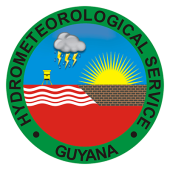Phase out Schedule
Guyana has been able to maintain compliance with the provisions of the Montreal Protocol, with the assistance of the United Nations Environment Programme (UNEP) and funding through the Multi Lateral Fund (MLF) we have achieved the phasing out of the Chloroflourocarbons (CFCs) in 2008, 2 years in advance of the Protocol’s phase out date of January 2010.
In addition to several other Ozone Depleting Substances (ODS) that was due to be phased out, namely, methyl bromide and halogens. The introduction of Regulation to control imports of ODS was passed, which will allow the imposition of a quota system for imports of the Hydrochloroflourocarbons, Hcfcs, which is the next ODS targeted for a reduction of consumption to 97.5% of current average consumption by 2030.
There has been continuous training of refrigeration and Air Condition technicians over the last 5 years as well as the enforcement arm of the Customs and Trade Administration to ensure that Guyana maintains its obligations to the Protocol.
The graph below sets out the planned phase out of the Hcfcs used in Guyana, mainly the R22 gas used in the ice making and air condition sector. The graph below informs on the projected phase out of the R22 gas under the Montreal Protocol phase out schedule, which Guyana is aiming to achieve.
| Schedule | Year |
|---|---|
| Baseline | Average of 2009 and 2010 |
| Freeze | 2013 |
| 10% reduction (90% of baseline) | 2015 |
| 35% reduction (65% of baseline) | 2020 |
| 67.5%(reduction (32.5% of baseline) | 2025 |
| Total phase-out | 2030 |
| 2.5 % of baseline averaged over 10 years (2030-2040) allowed, if necessary, for servicing of refrigeration & air-conditioning equipment until 2040 | 2030-2040 |


